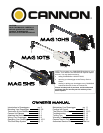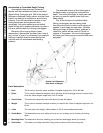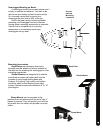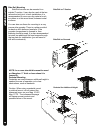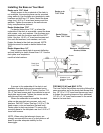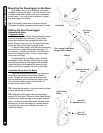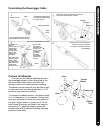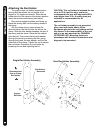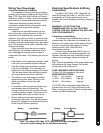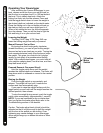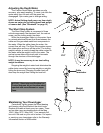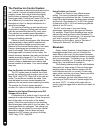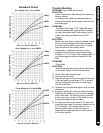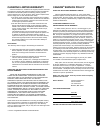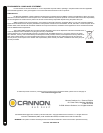
12
The Positive Ion Control System
Your boat has an electrical charge around the
hull in water. If a boat is properly bonded and
properly zinced, that charge should be slightly
positive when measured from ground to the
downrigger cable. Positive Ion Control (PIC) is the
use of electricity to control that charge and its
fluctuation so that it is always maintained at a
specified set voltage.
The practice of setting up and maintaining a
slight positive charge on fishing gear has been
used by commercial fishermen for many years.
This practice has enabled some fisherman to
increase yield when used along with other good
fishing and boating practices.
Cannon’s electric downriggers offer fishermen
a big advantage in being able to stabilize and
control the positive charge around their boat.
Because of the Lexan® construction of the frame,
Cannon downriggers are insulated from your
boat’s hull charge. When the stainless steel
downrigger cable is lowered into the water, the
natural ionization between the cable and the boat
creates a positive charge of 0.7 to 0.9 volts in
saltwater and 0.3 to 0.6 volts in fresh water. This
natural voltage is dependent upon salinity and
mineral content of the water. Your actual voltage
may vary.
How the Positive Ion Control System Works
The PIC system uses an internal circuit that
passes the voltage through the drive train of the
Mag 10HS \ Mag 10TS \ Mag 5HS to the reel set
screw. The set screw contacts the cable. Care
must be taken to ensure contact between the
cable and the set screw when replacing the cable.
The positive Ion Control system applies a
constant 0.6 volts on the trolling cable at all times.
Measuring the Natural Electrolysis and PIC
Voltage on Your Boat
A voltmeter with a scale of zero to one volt will
measure the natural electrolysis. Place the ground
lead of the meter on the motor or the battery
ground. Place the positive lead on the stainless
steel downrigger cable while it is in the water. The
downrigger must be unplugged. The voltage you
measure on the volt meter is your boat’s natural
electrolysis voltage. Use the same set up to
measure the PIC voltage; just plug in the Mag
10HS \ Mag 10TS \ Mag 5HS.
Using Positive Ion Control
Positive Ion Control is very effective when
trolling. The zone of attraction created at the
downrigger wire will attract the fish. It is best to use
a short drop back between the downrigger release
and the lure. Drop backs of 10 to 20 ft. are typical.
A drop back of 50 to 100 ft will entirely negate the
effects of the PIC circuit.
The PIC can be one of your best fishing
advantages, depending on fish type and location.
For example, Puget Sound Steelhead may not be
effected the same as Great Lakes Steelhead. To
fully benefit from PIC technology, it is important that
your boat is properly grounded. For more
information on this subject, refer to “Secrets of
Fishing with Electricity” by Ollie Rode.
Blowback
Simply stated, blowback is what happens to the
downrigger weight when you pull it through the
water behind your boat. As your speed increases,
so does the horizontal distance between the weight
and your downrigger. The faster you go, the farther
the weight is behind you. The farther the weight is
behind you, the shallower the weight is.
The following charts provide you with blowback
information for three sizes of Cannon downrigger
weights pulled at three different speeds with no
lures attached and with no current. Current drag,
water salinity and the use of non-Cannon products
will affect your actual trolling depth.
As an example, the first chart shows that if you
are trolling at 4 MPH with an 8 pound weight and
you have 100 FT. of cable in the water with no
current; the downrigger ball is actually at a depth of
about 80 FT.
POSITIVE ION CONTROL



